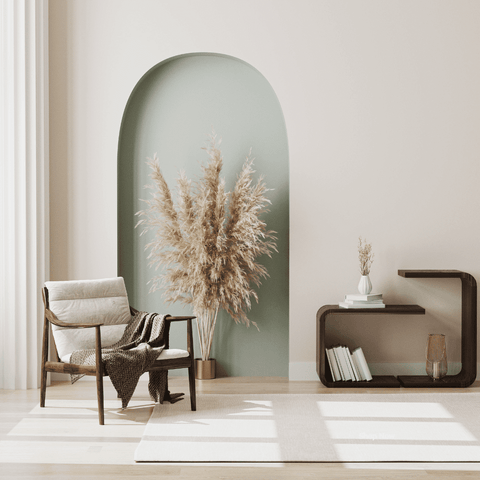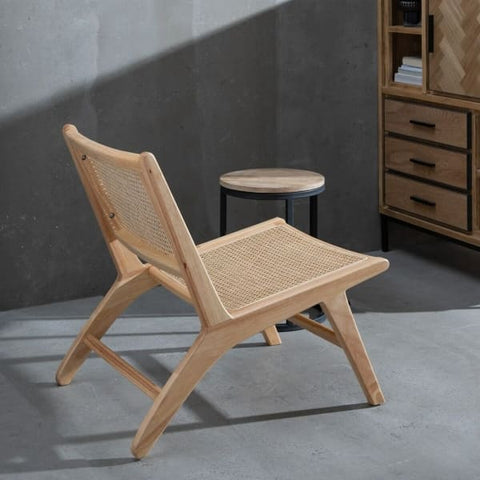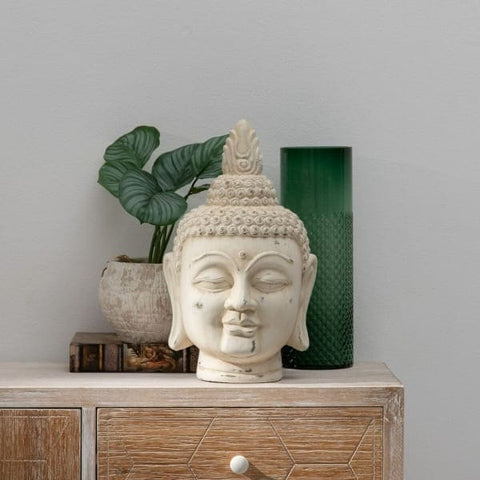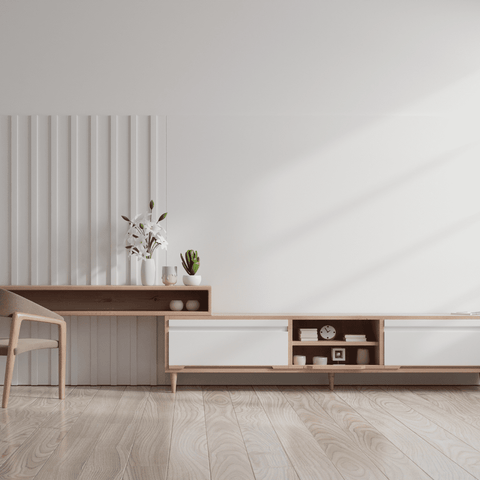The Japandi style , a perfect fusion between Japanese minimalist spirituality and warm Scandinavian comfort , is establishing itself as a major trend in interior decoration. Born from the combination of Japanese and Scandinavian aesthetics, this trend draws the best of both worlds to create refined, functional spaces imbued with serenity.

The growing popularity of Japandi can be explained by its unique approach which promotes simplicity, nature, and a feeling of tranquility, thus responding to a contemporary desire to return to basics and well-being at home.
Key Principles of Japandi Style
The key principles of Japandi focus on simplicity, functionality, and a deep connection with nature. This style advocates a thoughtful minimalism where each object has its place and its purpose, thus eliminating the superfluous to keep only the essential.

Functionality is also at the heart of Japandi, promoting practical and comfortable living spaces. Finally, the integration of natural elements, through raw materials and plants, creates a soothing atmosphere, inviting serenity and contemplation.
Colors and materials used for a Japandi decor
The Japandi color palette favors neutral and calming tones, combining soft shades of white, beige, gray, and black, to create a harmonious and balanced space.

The preferred materials are natural and authentic, including light wood, stone, bamboo, and organic textiles such as linen and cotton. These choices contribute to a warm atmosphere and invite well-being, while highlighting Japandi style's commitment to sustainability and connection with nature.
Furniture selection and layout
In the Japandi approach to the choice of furniture and space layout, favor refined and functional pieces that promote a zen environment. Choose low furniture, with simple lines and natural materials, to accentuate the feeling of space and calm.

Find the ideal relax armchair for a Japandi decor
The layout should encourage flow and openness, with minimal clutter. Use light dividers, such as sliding panels or open shelves, to demarcate spaces without closing them, thus preserving visual continuity and harmony in your interior.
Japandi decoration: focus on sustainability
The Japandi style is distinguished by its commitment to sustainability , favoring the use of sustainable and ecological materials in the decoration and choice of furniture. This eco-responsible approach is inspired by the Japanese philosophy of respect for nature and Scandinavian aesthetics promoting natural, renewable and long-lasting materials.

Discover our trendy sofas for your Japandi decoration
With a focus on materials like certified wood, bamboo, linen, and ceramics, Japandi encourages more conscious and environmentally friendly consumption practices, while creating aesthetically pleasing and calming interiors.
Essential accessories and decorations for a Japandi style
In the Japandi style, the choice of accessories is guided by the principle of not overloading the space. Choose decorative elements that are minimalist and functional, like simple ceramic vases, natural textiles, or understated artwork.

Accessories should complement and reinforce the sense of calm and balance in the space, rather than distracting from it. Prioritize the quality and meaning behind each piece to create a harmonious and personal environment.
Maximizing natural light: key element of Japandi style
Natural light plays an essential role in Japandi design, bringing brightness and a feeling of openness to the space. Promoting the entry of natural light, through unobstructed windows and strategically placed mirrors, amplifies the feeling of calm and connection with the outside.

Creating open, airy spaces is also crucial, using minimalist partitions or low furniture to maintain visual flow and encourage a relaxed and welcoming atmosphere.
Our advice for integrating Japandi into your home
To adopt the Japandi style at home, start by decluttering the space, favor furniture with simple lines and natural materials. Incorporate minimalist decor elements that combine aesthetics and function. Use neutral, soft colors for walls and textiles, emphasizing the importance of natural light.
Add plants for a touch of greenery and be sure to create an airy, open space. Each choice should aim for balance and tranquility, reflecting the fusion between Japanese minimalism and Scandinavian comfort.
The Tendances Meubles team.

